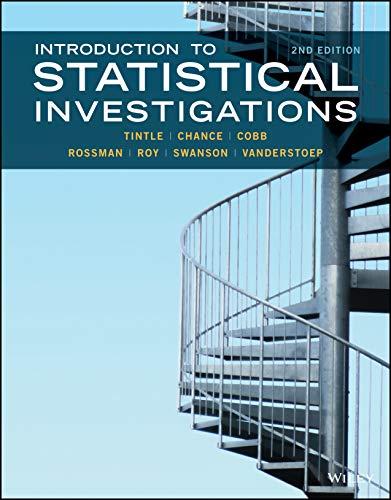Blindsight is a condition in which people are blind but can still respond to things they cannot
Question:
Blindsight is a condition in which people are blind but can still respond to things they cannot consciously see. A patient (who had suffered brain damage and whom researchers Persaud et al. called GY in Nature Neuroscience) was right-side blind, meaning he could not see anything in his right field of vision. But could GY still “see” objects in his right field of vision even though he has no conscious perception of the objects? Researchers tested GY on this by having him face a video monitor where they would run trials by sometimes having a square appear on the right side of the monitor and sometimes not. In 200 trials, GY correctly determined whether the square appeared or not 141 times. To determine if GY is more likely than random chance to correctly identify whether or not the square was present answer (a)–(e).
a. State the hypotheses in words and in symbols.
b. Using the One Proportion applet, construct an appropriate null distribution. What statistic is represented in the null distribution, and what is the standard deviation of your null distribution?
c. Calculate and report the value of the standardized statistic.
d. Based on the standardized statistic is there strong evidence that GY is more likely than random chance to correctly identify whether or not the square was present (or that GY has blindsight)? Explain how you are determining this.
e. Using the applet, find a p-value. Does the p-value lead you to the same conclusion as the standardized statistic did? Explain.
Step by Step Answer:

Introduction To Statistical Investigations
ISBN: 9781119683452
2nd Edition
Authors: Beth L.Chance, George W.Cobb, Allan J.Rossman Nathan Tintle, Todd Swanson Soma Roy





